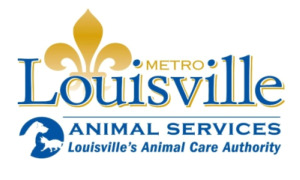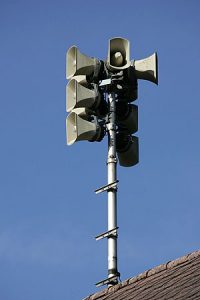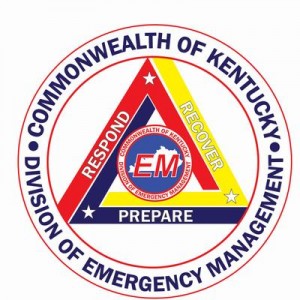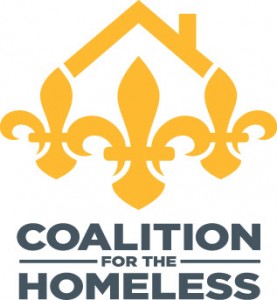Carolyn E. Congleton, DVM
Louisville Metro Animal Services
 Each summer Louisville Veterinarians treat numerous cases of heat-stroke and heat-exhaustion in pets. Unfortunately some of these cases end in pet death; sadly nearly 100 % of these cases are preventable. Most heat related deaths are in dogs and horses but sometimes cats can be victims of heat-related illness as well. In dogs the scenario is usually related to “forced exercise” or being left unattended in a car. Very rarely is a free-roaming dog victim of heat-stoke. A dog being chained outside without proper water and shade is also at risk of illness or death.
Each summer Louisville Veterinarians treat numerous cases of heat-stroke and heat-exhaustion in pets. Unfortunately some of these cases end in pet death; sadly nearly 100 % of these cases are preventable. Most heat related deaths are in dogs and horses but sometimes cats can be victims of heat-related illness as well. In dogs the scenario is usually related to “forced exercise” or being left unattended in a car. Very rarely is a free-roaming dog victim of heat-stoke. A dog being chained outside without proper water and shade is also at risk of illness or death.
Dogs should always have access to fresh water and shade or shelter at all times. A dog house with ice water inside is preferable. A large tree in the back yard is excellent shade for people and pets. Because dogs cannot sweat like people they have a hard time regulating their body temperature during exercise. If they are pulled by a leash they can’t voluntarily stop (like we humans can), they just have to keep going even though they are exhausted! If you jog with your pet do so in the early morning before extreme heat. Always watch your pooch for signs of exhaustion such as excessive panting or salivating.
The normal body temperature for a dog in the summer is 101-102 F, temperatures above 105 are in the danger zone and your pet is in trouble. If you have a hunting dog do not hunt in the heat of the day, hunting is also considered forced exercise. Never leave your dog or cat in a parked car. The temperature can skyrocket in a matter of minutes and your pooch could parish!
If you have a horse that is exercised be sure to have water available and remember there should be a “cooling-down period”. Horses transported in trailers need good ventilation and fresh water. Do not leave your horse unattended in a trailer.
For more information contact your local Veterinarian or the American Veterinary Medical Association at www.avma.org
Statewide Tornado Safety Drill Is Feb 23 – 10:07 A.M. EST

Photo: Roland Zumbühl
Governor Matt Bevin has signed a proclamation designating Feb 22 – 28 as Severe Weather Awareness Week in Kentucky. Severe weather is Kentucky’s most common threat, as evidenced by the four weather-related, federally-declared disasters during 2015.
“As evidenced by the severe weather events in the first two months of this year; preparedness efforts of our county EM partners, local emergency responders and citizen outreach, made a dramatic difference in ensuring no injuries or loss of life occurred during these responses”, said Michael Dossett, Director of Kentucky Emergency Management. Dossett went on to say, “Testing your plan during Awareness Week, whether by family members or with your co-workers, ensures we are all ready for the next weather hazard that may challenge the Commonwealth”.
As part of severe weather awareness activities, a statewide tornado drill will be conducted in conjunction with the proclamation.
At approximately 10:07 a.m. EST, Tuesday, Feb 23, the National Weather Service (NWS), in partnership with Kentucky Emergency Management (KYEM), the Kentucky Weather Preparedness Committee and Kentucky Broadcasters Association will issue a test tornado warning message.
Across Kentucky, outdoor warning sirens will sound, weather alert radios will activate, and television and radio stations will broadcast the alert; allowing the public the opportunity to practice tornado safety.
The broadcasted test message will emphasize this is only a test of the alert system. During the test alert all Kentuckians, businesses, hospitals, nursing homes, educators and government agencies are encouraged to participate in the tornado drill and update their emergency plans.
As part of Severe Weather Week activities, Kentucky Education Television (KET) will host the popular live viewer call-in show, “Severe Weather – Staying Safe”. A panel of weather experts field questions from the general public. Callers will be registered to receive one of five NOAA Weather Alert Radios which will be awarded at the end of the show. The show will air live on Monday, Feb 22 at 10:00 p.m. EST. More information is available here.
Being prepared for severe weather starts with identifying threats and risks. The first step for each citizen is to become weather-ready by knowing what types of weather hazards that can affect where they live and work, and how the weather could impact them and their family. Citizens should check local weather forecasts regularly, get a NOAA Weather Radio, and sign up for alerts from local emergency management officials. Severe weather comes in many forms and emergency planning should consider the possibility all types of local hazards. Continue reading
Breathitt, Fleming, Perry Counties Added
 Governor Steve Beshear announced today that residents of three additional counties with damage as a result of July severe storms and flooding are now eligible to apply for individual assistance from the Federal Emergency Management Agency.
Governor Steve Beshear announced today that residents of three additional counties with damage as a result of July severe storms and flooding are now eligible to apply for individual assistance from the Federal Emergency Management Agency.
According to FEMA, Breathitt, Fleming and Perry counties have been added to the list of counties for which individual assistance is available. Federal funding was already available to affected individuals in the counties of Carter, Johnson, Rowan and Trimble.
“This is good news for residents of Breathitt, Fleming and Perry Counties as they work to recover from these devastating storms,” Gov. Beshear said. “Our emergency management officials have worked hard to document damage and help in recovery efforts. I encourage citizens in the eligible counties to register with FEMA.”
People in the specified counties who need assistance can apply with FEMA online at: http://www.fema.gov/apply-assistance or by calling 1-800-621-3362. Assistance can include grants for temporary housing and home repairs, low-cost loans to cover uninsured property losses, and other programs to help individuals and business owners recover from the effects of the disaster.
Strong storms from July 11-20 caused heavy rain and flash flooding, which claimed lives, washed out roads and forced people from their homes in the affected communities. Four deaths have been attributed to the flash flood in the mountain community of Flat Gap in Johnson County.
Breathitt, Fleming and Perry counties were already on the list of those eligible for public assistance. In those counties, federal funding is available to local governments and certain private nonprofit organizations on a cost-sharing basis for emergency work and the repair or replacement of facilities damaged by the severe storms, tornadoes, straight-line winds, flooding, landslides, and mudslides in a total of 34 counties. The other counties are Bracken, Carroll, Carter, Clay, Cumberland, Elliott, Estill, Floyd, Henry, Jackson, Johnson, Knott, Lawrence, Lee, Leslie, Letcher, Lewis, Lincoln, Magoffin, Menifee, Montgomery, Morgan, Nicholas, Owsley, Robertson, Rockcastle, Rowan, Spencer, Trimble, Washington and Wolfe.
Federal funding is also available on a cost-sharing basis for hazard mitigation measures for the entire Commonwealth of Kentucky.
“This is a very positive outcome, Kentucky Emergency Management Director Michael Dossett said. “The incorporation of Breathitt, Perry and Fleming counties immediately makes available federal resources to impacted citizens for their long-term recovery efforts.”
Gov. Beshear issued an executive order declaring a state of emergency for all of Kentucky on July 13, 2015. The Commonwealth’s Emergency Operations Plan and the Commonwealth Emergency Operations Center were activated.
During the disaster, Gov. Beshear also issued an executive order prohibiting price gouging in the sale of goods and services in the Commonwealth, and implementing other provisions to protect Kentucky consumers.
Additional information on KYEM’s Recovery Branch and FEMA’s assistance programs can be found at http://kyem.ky.gov/recovery/Pages/Public-Assistance-Program-Overview.aspx where you can also ‘like’ and ‘follow’ KYEM on Facebook and Twitter.
 (FRANKFORT) – Kentucky storm survivors who have registered for disaster assistance are urged to stay in touch with the Federal Emergency Management Agency and keep their contact information current throughout the recovery process.
(FRANKFORT) – Kentucky storm survivors who have registered for disaster assistance are urged to stay in touch with the Federal Emergency Management Agency and keep their contact information current throughout the recovery process.
If survivors change their addresses, telephone numbers, bank accounts or insurance information, it is important that they share the new information with FEMA.
Those who need to update their contact information or have questions concerning FEMA correspondence can call FEMA’s toll-free helpline at 800-621-3362 (TTY 800-462-7585, Video Relay Service 800-621-3362) from 7 a.m. to 10 p.m. (Eastern Daylight Time) or go online toDisasterAssistance.gov.
Survivors can also call the helpline to:
- Ask questions about disaster assistance.
- Track the progress of their FEMA application.
- Get information about the inspection process.
- Learn about the steps to appeal a FEMA decision.
Survivors who have been referred for a low-interest disaster loan from the U.S. Small Business Administration should complete and return their loan application to be considered for other possible federal assistance.
Survivors do not have to accept a loan, but these loans can help with underinsured losses.
Survivors who have not been referred to the SBA and want to apply for a loan, may apply online using the Electronic Loan Application via SBA’s secure website at https://disasterloan.sba.gov/ela.
Survivors may obtain additional information about the loan application process by calling the SBA Disaster Customer Service Center at 800-659-2955 (800-877-8339 for people who are deaf or hard of hearing) or by sending an email to disastercustomerservice@sba.gov.
The deadline to return applications for physical property damage is Oct. 12, 2015. The deadline to return economic injury applications is May 12, 2016.
FEMA has made it a priority to reach everyone who needs help – including people with disabilities and/or access and functional needs, senior citizens and people with limited English proficiency – and to make sure survivor needs are met after the July storms.
Survivors who need reasonable accommodation to apply for assistance or to visit a disaster recovery center may call 502-209-2749 or Kentucky 711 for TTY.
 Since dogs and cats already have beautiful fur coats, it is easy to forget that they can suffer hypothermia, frost-bite, and other weather related injuries that people do. With the temperature dropping and lots of cold rain and/or snow already, it important to help your pet stay comfortable and safe throughout the winter season.
Since dogs and cats already have beautiful fur coats, it is easy to forget that they can suffer hypothermia, frost-bite, and other weather related injuries that people do. With the temperature dropping and lots of cold rain and/or snow already, it important to help your pet stay comfortable and safe throughout the winter season.
Here are some general tips to help you prepare for the coming cold weather:
- Puppies, kittens, and senior pets should not be left outside for any reason. Puppies and kittens are not fully developed and don’t have the ability to stand up to the colder temperatures yet. Senior pets are losing some of the natural defenses that they have and are more susceptible to the temperature as well.
- If you have outdoor cats, be cautious in starting your car. Many cats will climb under the hood of a car to stay warm. Knocking on your vehicle’s hood before you start it can let your pets know that it is time to vacate their hideout.
- Avoid shaving or cutting your pet’s hair short during the winter. If you don’t have a choice, consider purchasing a sweater for your pet. If you have a pet with short-hair and it appears to be sensitive to the cold, you may want to consider this as well.
- Anti-Freeze should be stored in a tightly closed container and kept away from pets. It is deadly.
- Wipe their feet off when they come inside. The salt or other de-icers used on your driveway or sidewalk can cause irritation to their paw pads.
- Keep your dog on a leash with a collar and ID tag at all times. The cold weather can mask a dog’s scent trail making it hard for them to find their way home if they get out.
- If you have an outside only pet – be sure their shelter is adequate. It is very important for the shelter to stay dry and draft free. Having a wet bed or wet fur will prevent your pet from regulating its body temperature. You should also make sure your pet has access to unfrozen water and you should increase their food intake.
- Keep your pet from chewing on your Christmas tree – both real and artificial. You should also think about what decorations are within reach of your pet. If you have a live tree, use a tree skirt to prevent your pet from drinking the water: some of the chemicals in the tree food are toxic. If you have a cat that likes to climb, be sure to anchor the tree so that it cannot topple over.
- Holly, poinsettias, mistletoe and many other common household plants are toxic to your pet. A list of some of the common toxic and non-toxic plants can be found on the ASPCA website.
These are just a few guidelines to help you ensure your pet’s safety during the winter months. More information can be found at the ASPCA, Pet WebMD, and PetSmart websites.
 Temperatures are expected to drop well below freezing this weekend. For most of us, that means turning up the heat, bringing in our pets, and pulling out sweaters–but for the people who sleep on the streets of Louisville on winter nights, it can mean life or death. Natalie Harris, Executive Director of The Coalition for the Homeless, explains, “Every single night, there are more people in need than there are available beds, so hundreds of individuals and families are forced to find other options each year. Many times, this means sleeping on the streets.”
Temperatures are expected to drop well below freezing this weekend. For most of us, that means turning up the heat, bringing in our pets, and pulling out sweaters–but for the people who sleep on the streets of Louisville on winter nights, it can mean life or death. Natalie Harris, Executive Director of The Coalition for the Homeless, explains, “Every single night, there are more people in need than there are available beds, so hundreds of individuals and families are forced to find other options each year. Many times, this means sleeping on the streets.”
This is the second winter for The Coalition for the Homeless’s Bed One-Stop program, which just won the Center for Nonprofit Excellence’s Award for the Art of Social Innovation. Bed One-Stop offers homeless Louisvillians a centralized, uniform way to reserve a bed at any local emergency shelter. Even so, The Coalition has had to turn away over 1,350 people in the last two months due to not having enough available beds and there are currently 53 families on the program’s waiting list.
Fortunately, during inclement weather, Operation White Flag offers a better option. When temperatures drop to 35 degrees or lower in the winter (with or without wind chill), The Coalition for the Homeless activates Operation White Flag, and three local shelters generously open their doors to make space for everyone.
“Even without a bed for each person, through Operation White Flag, all people can get a warm, safe place to stay indoors to avoid frostbite or hypothermia. We encourage all homeless people to take advantage of this opportunity,” says Harris. To make a bed reservation, call (502) 637-BEDS (502-637-2337).
Operation White Flag is possible thanks to funding from Metro Government and the hospitality of three local shelters–Salvation Army, St. Vincent de Paul (for men only), and Wayside Christian Mission. Unfortunately, though, the program costs more than can be covered by this funding. But, a donation of just $35 will provide a warm place for one homeless person to stay for one week during the coldest weather. Donate online at The Coalition for the Homeless’s website, www.louhomeless.org, by sending a check to The Coalition for the Homeless at 1300 S. 4th Street, Suite 250, Louisville, KY 40208, or by calling (502) 636-9550.
 Weather
Weather Traffic
Traffic @LouisvilleDispatch
@LouisvilleDispatch @LouisvilleDisp
@LouisvilleDisp Subscribe
Subscribe